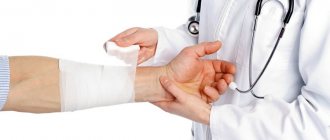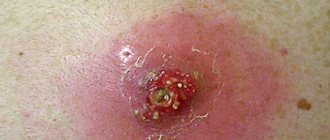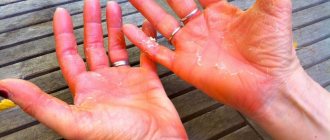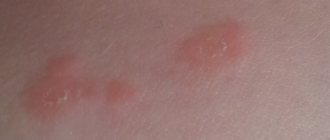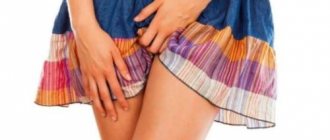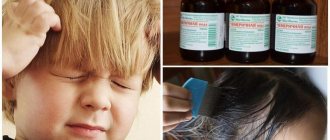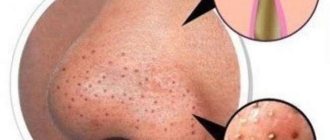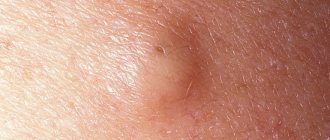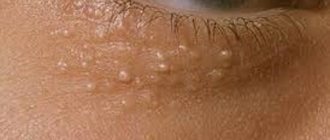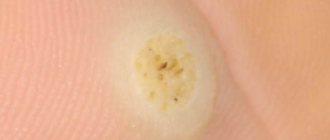- July 19, 2018
- Dermatology
- Elena Zhmakina
Human skin is the first to encounter all negative factors. Her condition can tell you a lot about her health. A lack of vitamins or problems in the functioning of internal organs will immediately affect the condition of the skin. Currently, skin problems are diagnosed in both children and adults. Let's consider one of them - perioral dermatitis. What are the causes of the disease and is it possible to get rid of the pathology? More on this later.
What is the disease?
A disease such as perioral dermatitis has a code in ICD-10 of L71.0. This pathology has a second name in medical circles - perioral or rosacea-like dermatitis. It occurs quite rarely and most often affects women between the ages of 20 and 40. Oddly enough, the disease more often affects the skin of women who carefully care for themselves.
Perioral dermatitis is manifested by the appearance of small pimples, redness and papules on the skin around the mouth. The spots begin to peel off and spoil the appearance, which causes considerable physical and psychological discomfort. Over time, they become more numerous and occupy almost the entire chin. After healing, dark spots remain in place.
What can trigger the appearance of pathology?
Symptoms of the disease
The initial stages of perioral dermatitis look like minor redness in the form of acne, but over time, it becomes clear that pathological changes in skin tissue have nothing to do with acne and acne.
The disease usually affects the area of skin around the mouth and nose, which is why steroid dermatitis is called perioral, that is, located in the mouth area. Usually there is a gap between the lip line and the affected area; it is always there, at least a couple of millimeters wide. Less commonly, skin lesions extend higher into the eye and forehead areas.
The areas of skin under the rash turn red and have a dense structure; in more advanced conditions, the dermatitis around the mouth flares, flakes and itches.
Perioral dermatitis is often confused with rosacea, since both diseases have similar localization and similar redness. The difference is that rosacea is a vascular disease that occurs due to the pathology of the blood vessels or their location too close to the surface of the skin. The causes of the development of perioral dermatitis can be both internal and external factors.
Symptoms of perioral dermatitis increase during the premenstrual period in women. Most often, this skin defect affects women of different ages. Among men, cases of steroid dermatitis are recorded less frequently.
The first cases of a perioral defect in humans were noted in the 60s of the last century, in women in whose work appearance was very important, in particular in flight attendants. Girls often wore a lot of makeup, because with a busy flight schedule it was difficult to look good without makeup. Therefore, this disease was often called flight attendant dermatitis.
Causes of perioral dermatitis
The manifestations of the disease can be pronounced and intense, appearing in a short period of time, but there are cases when the pathology develops over a long period of time and without characteristic symptoms. You should be wary and visit a doctor if:
- A rash appeared, located in clusters.
- The chin and skin around the mouth itches and a burning sensation occurs.
- Feeling of tightness of the skin around the mouth, dryness and flaking.
- Pimples with purulent or watery contents.
Perioral dermatitis on the face can appear periodically, heal within a couple of months, and then return again. As a rule, doctors associate the first manifestations of pathology with several causes, although the exact etiology of the disease is still not known:
- Disturbed hormonal levels.
- Gynecological problems.
- Incorrectly selected cosmetic products.
- Using expired cosmetics.
- Toothpaste or chewing gum with fluoride.
- Exposure to ultraviolet rays.
- Perioral dermatitis often occurs against the background of increased sensitivity to steroid and hormonal drugs.
- Disturbances in the functioning of the gastrointestinal tract.
- Decreased protective functions of the body.
- Applying a large amount of cosmetics, especially low quality, to the face.
- Rashes can be caused by fungi and bacteria that have settled in the hair.
Recently, cases of diagnosing the disease in men have become more frequent. This can be explained by the fact that a strong half of humanity also uses cosmetic skin care products.
Factors in the development of the disease
To date, there is no exact information about the exact causes of perioral dermatitis. Official diagnosis makes several assumptions about the nature of this disease:
- Genetic predisposition.
- Skin that is too light and prone to redness.
- Abuse of cosmetics.
- Intolerance to fluoride toothpastes.
- Incorrect, unbalanced diet.
- Experienced emotional shock or constant anxiety and stress.
- Use of hormonal drugs.
- Abuse of aggressive peelings and alkaline cleansers.
- Allergy to UV radiation.
- Gastritis and other diseases of the gastrointestinal tract.
- Weakening of the immune system.
- Bacteria, demodex mite parasitic on the skin.
- Use of nasal or inhaled corticosteroid medications.
Most experts are inclined to believe that the trigger for the onset of the disease is the use of fatty hormonal creams and ointments by a person. For this reason, perioral dermatitis is also known as steroid dermatitis. Especially often, a sharp manifestation of the disease is associated with the abolition of steroid drugs that have been used for a long time. Please note that the shelf life of steroid drugs is very short. You cannot prescribe treatment with steroid ointments yourself, use it whenever you want without following the instructions, take long breaks in treatment and re-use a long-opened remedy, even if it is stored in the refrigerator. Hormonal drugs have a great positive effect in medicine, but not in the case of this perioral dermatitis. On the contrary, you need to stop using such ointments. The skin must learn again, to live without hormones, even if there is a strong rebound, that is, a deterioration in the condition after withdrawal. Doctors do not recommend using corticosteroid creams on the face.
When should you visit a doctor?
If you are concerned about perioral dermatitis and have taken some home measures, you will have to go to a dermatologist in the following cases:
- When all cosmetics are discontinued, no improvement is observed.
- If you need to do something about the disease, but you can’t stop using cosmetics.
- There is an urgent need to improve the condition of the skin.
- There is severe peeling on the skin and a lot of pimples with purulent contents.
After examination and conversation with the patient, the doctor prescribes treatment.
Symptoms
The following signs are alarming:
- Feeling of tightness of the skin in the chin and lips.
- Itching and burning in these areas.
- Redness of the skin in the mouth and chin area.
- The formation of papules, the diameter of which is approximately 3 mm. Over time, they fill with transparent contents or exudate.
- Peeling of the skin.
If left untreated, perioral dermatitis (photos of the clinical manifestations of the disease are presented below) progresses. This is expressed in coarsening and thickening of the skin. It becomes lumpy, and pigment spots are clearly visible on it.
Perioral dermatitis is treated by a dermatologist. It is he who should be contacted when the first alarming symptoms occur. The doctor will collect anamnesis, conduct an examination, and also prescribe a comprehensive examination (blood and skin tests), based on the results of which he will create the most effective therapeutic regimen.
Recommendations for self-relief from perioral dermatitis
Many dermatologists tend to believe that following simple recommendations can help get rid of pathology:
- If your toothpaste contains fluoride, try replacing it with regular toothpaste.
- Avoid any cosmetic products in facial skin care.
- Stop using ointments and creams with glucocorticoids.
- If you need to use inhalers with glucocorticoid hormones, you should discuss the issue of replacement with your doctor.
These recommendations imply the exclusion of drugs that can provoke the development of pathology. It should be taken into account that when glucocorticoid drugs are discontinued, the skin condition may worsen, but after a couple of weeks a noticeable improvement will be observed.
Prevention
To prevent the development of the disease, it is recommended to strictly follow the following rules:
- Stop using corticosteroid ointments and creams. Long-term treatment with such drugs significantly increases the risk of pathology. If the medications were previously prescribed by a doctor, you must contact him again with a request to make adjustments to the therapeutic regimen. It is important to remember that corticosteroids should not be used for more than 7 days.
- Responsible for observing personal hygiene rules. It is necessary to wash your face both in the morning and in the evening. It is forbidden to use soap. This is an alkali that destroys the protective layer of the skin, making it vulnerable to various irritants. It is recommended to use high-quality products with natural composition and a neutral pH value.
- Limit the use of toothpaste containing fluoride. This is a component that has an irritating effect on the oral mucosa.
- Always use products with a high spf protective factor. Contrary to popular belief, this should be done every day, and not just in the summer. This is the only way to protect your skin from the harmful effects of ultraviolet rays.
- It is necessary to make adjustments to the diet. The consumption of spicy and salty foods should be limited to a minimum. In addition, for persons suffering from perioral dermatitis, any alcohol-containing drinks are prohibited.
Compliance with these rules significantly reduces the risk of developing the disease. However, therapeutic measures do not exclude the possibility of short-term periods of exacerbation.
Treatment of the disease
If stopping cosmetics and medications does not help, then you need to visit a doctor. Since the disease can be provoked by the presence of internal problems in the body, consultation with other specialists is often required: gynecologist, endocrinologist, neurologist, therapist.
Therapy after examination is carried out in several directions:
- Taking antibacterial agents.
- Use of ointments and creams.
- The use of folk remedies.
- Nutrition correction.
Let's look at all types of treatment in more detail.
Reviews about the treatment
The disease requires a comprehensive therapeutic approach. An effective treatment regimen for oral dermatitis has now been developed. According to reviews, the disease is difficult to treat. To achieve stable remission, you must responsibly follow all doctor’s recommendations.
To increase the effectiveness of medications, it is allowed to use non-traditional methods of treatment. Judging by the reviews, treatment of oral dermatitis with folk remedies (taking various decoctions, treating the skin with ointments and lotions, as well as applying compresses) significantly speeds up the process of relieving the acute phase of the disease. After just a few procedures, the redness practically disappears, and the painful itching and burning subsides.
Treatment with antibiotics
If zero therapy does not lead to noticeable results, then doctors are inclined to prescribe antibiotics. These drugs can cure the patient of the disease. Most often prescribed:
- "Minocycline" tablets.
- "Doxycycline."
- Metronidazole tablets or cream for perioral dermatitis with Metronidazole.
The effect of taking antibiotics can be noticed after 2-3 weeks, but you should not stop the course of therapy ahead of time; the duration of treatment is determined by the attending physician. During treatment with antibiotics, it is necessary to take medications to maintain intestinal microflora.
The treatment regimen may look like this:
- Take Doxycycline or Minocycline 2 times a day in the dosage prescribed by the doctor until the skin rash disappears. Then the dose of the medicine is reduced, and administration continues for another 4 weeks.
- Metrogyl gel, which must be applied in the evening, will help relieve the symptoms of perioral dermatitis.
This scheme will give noticeable improvements in a short time.
Elidel cream against oral dermatitis
Another name for this drug is Pimecrolimus. This drug is used only in exceptional cases when other treatment regimens have failed. At the moment, the exact mechanism of action of Elidel has not been studied, which makes it difficult to predict the consequences of its use.
Cream Elidel
To achieve a quick effect from the treatment, the specialist usually prescribes Pimecrolimus twice a day. It must be applied in as thin a layer as possible and only on diseased areas. If the active substance gets on clean skin, it is better to wipe it with wet wipes so as not to provoke serious side effects. Therapy using Elidel continues for each patient for an individually selected period of time.
Attention! Some experts believe that the drug has a strong inhibitory effect on human secondary immunity. As a result of this suppression, cancerous skin tumors have been reported more than once.
Ointments for the treatment of perioral dermatitis
In addition to taking antibiotic tablets, your doctor will prescribe ointments to treat perioral dermatitis. It is recommended to use only those drugs prescribed by a specialist. It is prohibited to use products based on hormonal components.
If you have a diagnosis such as perioral dermatitis, treatment with ointments will speed up the healing process. The following compositions are allowed for use:
- "Metronidazole", "Trichopol". These ointments, despite their low cost, are quite effective. Apply the ointment to clean skin in the morning and evening. The duration of treatment depends on the severity of the condition and is determined only by the attending physician. Usually it takes about 3-9 weeks.
- Erythromycin ointment will also help overcome the diagnosis of perioral dermatitis. In dermatology, this remedy is used often and quite successfully. The product copes with redness and accelerates tissue restoration.
- Zinc ointment for perioral dermatitis eliminates inflammation, reduces swelling, itching and redness. The low risk of side effects allows the product to be used even in the treatment of pregnant women and children. The ointment is applied 1 to 3 times a day, depending on the severity of the pathology. The duration of therapy is 5-10 days, but in severe cases it can be extended up to a month.
- The following ointments have shown good results in the treatment of perioral dermatitis: “Bepanten”, “Skinoren”.
When using all of the medications listed, we must not forget about side effects, so only a doctor should prescribe medications. Treatment under the strict supervision of a specialist will be much more successful.
Therapy can be completed with physiotherapeutic procedures. The most suitable for this case:
- Use of liquid nitrogen. It removes formations on the skin well.
- Laser therapy. Relieves puffiness, reduces inflammation, accelerates tissue regeneration, increases blood flow to the upper layers of the skin. In a short time, the skin takes on a healthy appearance.
- Radiation may be needed if the skin is severely affected and involves a large area.
Such an integrated approach will speed up recovery and eliminate relapse of the pathology.
Where to start treating oral dermatitis
Since the use of medications alone in the treatment of this disease is not enough, it is important to observe the following measures when treating skin dermatitis:
- completely stop using decorative cosmetics, as they do not allow the active substances to penetrate deep enough into the inflammation and can cause additional irritation;
- you should stop using cosmetic creams unless your doctor approves their use;
- complete refusal to use any hormonal ointments on the face;
- if treatment with such medications was carried out at the time of the onset of symptoms of oral dermatitis, you should not abruptly abandon the medications, as this will provoke a sharp deterioration in your health;
- introduce a large amount of plant foods into the diet, reduce the number of fried, salted and smoked foods.
How to treat oral dermatitis
Zero therapy for oral dermatitis
Attention! It is also important to use plain clean water or decoctions of medicinal herbs for washing. Plants such as chamomile, string and calendula will help relieve irritation and swelling. You should wash your face with healing decoctions in the morning and evening until the main symptoms of oral dermatitis disappear.
Taking care of your skin during treatment
During treatment for perioral dermatitis, it is important to follow the following skin care recommendations:
- Do not use cosmetics that were used before the onset of the disease. Use only products prescribed by your doctor.
- After eliminating all manifestations of the pathology, gradually return to the usual care creams, lotions and masks, but do this with the permission of the attending physician.
- To improve the condition of the skin, it is advisable to use a complex containing vitamin B and nicotinic acid. This will not only speed up skin regeneration, but also strengthen the immune system.
Diagnostic methods
There are a number of factors and methods by which perioral dermatitis is diagnosed:
| Diagnosis according to the severity of the disease | The PODSI (Perioral Dermatitis Severity Index) score is as follows:
|
| By localization |
|
| Complaints |
|
| According to the nature of the rash | Grouped, rarely confluent areas; white or yellow pustules may be present |
| Sowing | Demodex |
| During diascopy | The rash turns pale or turns yellow with granulomatous inflammation |
| Secondary rashes | Steroid dermatitis is characterized by relapses, the formation of pigment spots, and with a very complex course of the disease, scars may remain |
Perioral dermatitis in children
In children, this disease occurs much less frequently than in adults, but occurs with more severe symptoms. Doctors often have to treat advanced forms of the disease because parents confuse it with contact dermatitis due to drool during teething, or with a common allergy to certain foods.
The first symptoms of this form of dermatitis may appear during meals and then disappear. As the disease progresses, the rashes become persistent. At the first suspicion of pathology, you should urgently visit a dermatologist. The sooner therapy begins, the more successful it will be.
If a diagnosis of oral dermatitis is made, treatment in children is reduced to taking the following medications:
- Antibiotics from the tetracycline series. But it must be remembered that these drugs are prohibited for use in children under 8 years of age.
- Zinc ointment. A reliable and proven remedy for treating many skin problems. Effectively relieves inflammation, reduces itching and redness. It is allowed to use the product even in the treatment of newborns. The non-toxicity of the product prevents overdose even with frequent use.
- Antihistamines help eliminate itching and relieve redness, but due to the risk of side effects, they should be taken only after consulting a doctor.
The presence of perioral dermatitis in a child requires gentle skin care. It is not recommended to rub your face too much after washing; just blot with a napkin. If oral dermatitis is diagnosed, treatment in children involves excluding the following factors:
- Toothpastes containing fluoride. It is better to choose a more suitable dental care product for your child.
- Use of ointments and gels with hormones.
- Uncertified children's cosmetics.
Often it is enough to remove negative factors and no treatment is required. Mothers can be advised not to start self-medication if they discover skin problems in their baby, but to visit a specialist.
Development of the disease in childhood
In children, areas of the skin affected by red nodules with rashes may experience peeling where the blisters break. The disease can manifest itself against the background of asthma, during inhalation therapy. Early treatment of atopic dermatitis, accompanied by corticosteroid drugs, can provoke the development of perioral dermatitis on the face. Thus, steroid dermatitis develops. These drugs cause addiction to the skin and contribute to the transition of the disease to a chronic form. The use of even such a mild drug as hydrocortisone can have a negative impact. Stopping steroid ointments for children abruptly can be dangerous due to the fact that the child’s skin is very delicate and withdrawal of the drug can be difficult to tolerate. It is necessary to discontinue the drugs gradually; for this reason, treatment of perioral dermatitis in a child can take up to a year or more. To alleviate the unpleasant consequences of withdrawal, lotions with mineral water are prescribed to the affected areas.
Folk remedies in the treatment of perioral dermatitis
In the presence of perioral dermatitis, treatment with folk remedies can complement the main therapy. Traditional healers recommend the following recipes to get rid of the disease:
- Make lotions on the affected areas of the skin from the infusion of string, celandine, and plantain.
- Flaxseed oil compress. Mix flax oil and honey in equal proportions, heat in a water bath and add a little onion juice. Moisten a napkin in the mixture and apply to the skin.
- A pumpkin mask gives good results. Grate the pulp and apply to the affected areas on the face.
- Decoction of birch buds.
- Infusion of oak bark.
- You can use aloe or Kalanchoe juice to treat the skin.
- Beekeeping products have a bactericidal effect, so they will also help get rid of the manifestations of perioral dermatitis.
- Propolis-based ointment. Take part of the propolis and combine with 4 parts of vegetable oil, heat in a water bath until it is completely dissolved.
- Dissolve a teaspoon of baking soda in a glass of water and wipe the skin.
When choosing folk remedies, you must remember that the effect of their use will be if they are used in combination with drug therapy.
General characteristics of the pathology
It is important to remember that a positive result is observed only when, along with symptomatic therapy, it is possible to cure chronic foci of infection. In addition, the functioning of the nervous and endocrine systems and the functionality of the gastrointestinal tract should be normalized.
As necessary, medications are used to normalize the immune system, medications to strengthen the central nervous system, vitamin therapy (folic acid, vitamins B, A and C).
During the summer, sunscreen should be used, as direct ultraviolet rays can aggravate symptoms. It is necessary to use a cream with a high protective factor. In addition, cryomassage has a positive effect.
Warning! The use of corticosteroids (Elocom, Advantan, etc.) for this type of dermatitis is contraindicated. External treatment with glucocorticosteroids (Elocom, Advantan) can lead to the development of glaucoma.
Most often, this pathology occurs in women aged 20 to 40 years. The appearance of a rash is also often observed in children. Naturally, this disease must be treated, since delay can lead to serious consequences.
It should consist of several stages. Firstly, the patient must stop using corticosteroids and any cosmetics. Do not use scrubs, exfoliate, or scratch the rash. Otherwise, you may introduce additional infection into the wounds, which will complicate treatment.
– Antihistamines: “Diazolin”, “Citrine”, “Tavegil”.
- Antibiotics. If you have oral dermatitis, treatment with metronidazole is carried out for a month according to a special regimen. Gradually, the dose of the drug taken should be reduced. Only a doctor prescribes this medicine.
– If the patient has edema, then he must definitely use diuretics: “Furasemide”.
– Since the disease causes serious psychological discomfort, the patient may be prescribed a sedative: valerian, motherwort.
– To maintain immunity, a person is offered vitamin B6, as well as various multivitamin complexes.
– Lotions made from a solution of boric acid will be useful.
To speed up wound healing, you can use special powders and moisturizing creams. Hormonal ointments are considered effective in treatment, but their use is very limited, as they can have negative consequences.
– The most widely used is a decoction of oak bark. The fact is that this product has good antiseptic properties. A solution of baking soda (1 teaspoon of powder per glass of water) has the same effect.
– An infusion of birch buds can eliminate symptoms and skin irritation. To do this, pour a tablespoon of raw material into a glass of water. You can not only wipe the affected areas with the liquid, but also drink it.
– It is good to treat the rash with strong decoctions of chamomile, calendula, St. John's wort or string. This should be done at least 2 times a day.
– Fresh aloe and plantain juice have antimicrobial and anti-inflammatory properties. To prepare it, try to twist the leaves in a meat grinder. Add a tablespoon of alcohol and honey to the gruel. Mix all ingredients well. Wipe your face with the resulting porridge several times a day.
– You can also prepare a healing ointment at home. To do this, melt some butter over low heat and mix it with a teaspoon of propolis. Next, the resulting substance should harden. The ointment can be applied to the affected areas in the evening before bed.
– Pumpkin pulp is effective. To do this, chop the fruit using a grater. Do not pour out the juice. The resulting paste should be applied to the affected areas of the face for 10 minutes.
If you have a disease such as oral dermatitis, treatment with folk remedies will quickly help you get rid of the problem.
Reconsidering nutrition
If you have skin problems, you won’t be able to improve the situation without adjusting your diet. Any form of dermatitis is no exception. A diet for perioral dermatitis involves excluding from the diet such foods as:
- Any products that can provoke an allergic reaction.
- Fatty and fried foods.
- Spicy seasonings, marinades.
- Exotic fruits.
- Milk.
- Sweets.
- Limit consumption of fish and mushrooms.
- Reduce the amount of salt in your diet.
- Alcoholic drinks must be prohibited.
- It is forbidden to eat fast food.
You need to eat regularly, including dishes and foods rich in fiber.
Protecting yourself from sun rays
During treatment of perioral dermatitis, it is necessary to avoid direct exposure to sunlight and temperature changes. It is important to adhere to the following recommendations:
- It is impossible to lock yourself in a dark room during treatment, so when going outside, especially in the summer, protect your face from sunlight.
- Use sunscreens, but their selection should be done by a doctor so as not to worsen the situation.
- The temperature in the room should be normal; too high will lead to a decrease in the positive dynamics in therapy.
Following all the doctor’s recommendations and taking prescribed medications will help you get rid of the symptoms of the disease faster.
Prevention of dermatitis
If perioral dermatitis has been cured, this does not mean that the disease will not return again. To reduce the risk, it is necessary to take preventive measures:
- Avoid using ointments and cosmetics containing corticosteroids if possible.
- If there is no such recommendation from the dentist, then it is better not to use toothpastes with fluoride. Be especially careful when choosing toothpastes for children.
- Carefully select personal hygiene products for washing clothes and washing dishes.
- Lead a healthy lifestyle.
- Follow your doctor's dietary recommendations.
- Do not consume foods that are harmful to health.
- Observe personal hygiene rules.
- If there are infectious diseases, treat them promptly.
- Monitor the functioning of the gastrointestinal tract.
- If the doctor recommends, then periodically take fortifying and vitamin preparations.
- Monitor the state of the nervous system.
Any skin problems are most often the result of a disruption in the functioning of internal systems and organs in the body. You should not self-medicate or listen to the advice of friends and neighbors. Those remedies that helped one person are not guaranteed to be effective in treating another. Yes, and problems can be different, provoked by various reasons.
Independent elimination of the symptoms of perioral dermatitis is fraught with the development of even greater complications. The manifestations may only become brighter, or after such self-therapy there will be scars and marks on the skin.
Cost of drugs against oral dermatitis
| A drug | Image | Price in Russia | Price in Belarus | Price in Ukraine |
| Parlazin | 100 | 3,5 | 41 | |
| Zyrtec | 500 | 17 | 205 | |
| Suprastin | 150 | 5 | 62 | |
| Metronidazole | 100 | 3,5 | 41 | |
| Erythromycin | 100 | 3,5 | 41 | |
| Tetracycline ointment | 100 | 3,5 | 41 | |
| Minocycline | 300 | 10 | 123 | |
| Doxycycline | 300 | 10 | 123 | |
| Tetracycline | 100 | 3,5 | 41 | |
| Elidel | 1000 | 35 | 410 |
Attention! All prices are indicated in national banknotes. Taking into account the current pricing policy, the cost of medicines may change slightly up or down. When purchasing medications from online pharmacies, you can purchase the product at a better price.

